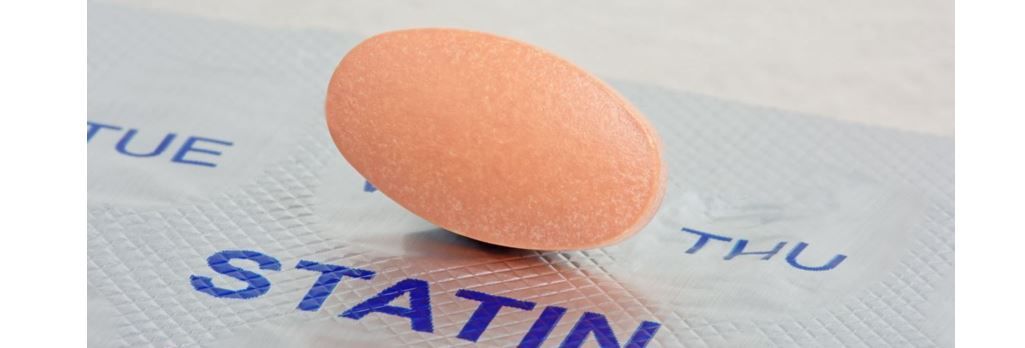- Clinical Technology
- Adult Immunization
- Hepatology
- Pediatric Immunization
- Screening
- Psychiatry
- Allergy
- Women's Health
- Cardiology
- Pediatrics
- Dermatology
- Endocrinology
- Pain Management
- Gastroenterology
- Infectious Disease
- Obesity Medicine
- Rheumatology
- Nephrology
- Neurology
- Pulmonology
Statin Use May Reduce VTE Risk in Perimenopausal Women Taking Exogenous Hormones
While not eliminated, study authors found risk of VTE reduced roughly by half in women taking vs not taking a statin when initiating hormone therapy.
©Roger Ashford/stock.adobe.com

Treatment with statin drugs was associated with a decreased risk of venous thromboembolism (VTE) among perimenopausal women who had recently initiated hormone replacement therapy, with greater risk reduction observed with higher-intensity statins, according to study findings published online in JAMA Network Open.
The authors, led by John W Davis, BA, of the department of population health science at the University of Texas Medical Branch (UTMB) School of Public and Population Health, caution, however that while the risk appeared to be reduced, it was not eliminated.
Hormone replacement therapy has long been used effectively to treat menopause-associated symptoms, including hot flashes, vaginal dryness, cognitive changes, and sleep disturbance, wrote Davis and fellow investigators from the UTMB, in Galveston, TX, although concerns regarding HRT-related risk of VTE, as well as stroke or myocardial infarction, have led to more cautionary clinical practice, preventing many women from receiving a prescription. Reserve has been based on early clinical trials that used oral conjugated equine estrogen, a formulation that has been largely replaced by other types of estrogen, routes of administration, and earlier initiation of therapy, which more recent research has shown may be associated with lower risk, according to Davis and colleagues. The need for further validation of the positive findings led Davis et al to explore whether statin therapy mediates VTE risk in US women aged 50 to 64 years "exposed to exogenous hormones."
Using the Optum deidentified Clinformatics Data Mart Database of medical claims for approximately 62 million unique enrollees, Davis and colleagues identified cases and matched controls among women aged 50 to 64 years with 1 or more years of continuous Optum enrollment between January 1, 2007, and December 31, 2019.
Cases: women with a VTE diagnostic code during the observation period followed by a prescription for an anticoagulant, intravascular vena cava filter, or death within 30 days of the VTE diagnosis (index date).
Controls: randomly sampled (without replacement) and matched to cases by index date (month) and age (±2 years) at a 10:1 ratio.
Exposure: Filled prescriptions for estrogens, progestogens, and statins recorded in the 12 months prior to index.
Recent HT exposure: any estrogen or progestogen exposure within 60 days before the index date.
Current statin exposure: ≥90 days of continuous exposure prior to and including the index date. Statin intensity: defined by the statin exposure 30 days prior to index.
Davis and colleagues identified 223 949 perimenopausal women (mean age 58 years). Among them, 20 539 with a VTE diagnosis (cases) met the study’s inclusion criteria and were matched to 203 590 controls.
FINDINGS
Overall, 8.73% of the cohort had recent HT exposure and 16.18% had current statin therapy exposure.
Covariates considered in adjusted models included area of residence, age, history of cancer excluding nonmelanoma skin cancer, history of prothrombotic conditions, varicose veins within the previous 12 months, hospitalization or trauma within 30 days and prior coronary artery disease, stroke, dyslipidemia, and smoking in the past year.
Looking at the adjusted models, investigators found that any recent exposure to HT was associated with greater odds of VTE vs no exposure (OR, 1.51; 95% CI, 1.43-1.60). Similarly, but in reverse, current treatment with statins was associated with lower odds of VTE vs no current statin exposure (OR, 0.88; 95% CI, 0.84-0.93).
When the team compared perimenopausal women neither taking statins nor receiving HT with those exposed to either one or both they found 53% greater odds of VTE for those taking HT without a statin (OR, 1.53; 95% CI, 1.44-1.63). Risk of VTE was reduced by half to 25% greater odds for those taking HT with statins (OR, 1.25; 95% CI, 1.10-1.43). The odds of VTE were lower by approximately 10%, for those taking statins without HT (OR, 0.89; 95% CI, 0.85-0.94).
Davis and colleagues found 18% lower odds of VTE among individuals taking HT with statin therapy vs those who were not taking statins (OR, 0.82; 95% CI, 0.71-0.94). Finally, when they made a direct comparison between HT without statin therapy and HT with low- and moderate-intensity statin, they observed a 16% reduction in risk of VTE (OR, 0.84; 95% CI, 0.73-0.98), and a comparison with HT with high statin intensity showed a 31% reduction (OR, 0.69; 95% CI, 0.50-0.95).
“In this case-control study of women with VTE and matched controls, we found statin therapy was associated with reduced, but not eliminated, risk of VTE associated with exogenous hormones, the authors wrote in their conclusion.
"Although women who are at higher cardiovascular risk may take statins, and thus may seem unlikely candidates for HT, statin therapy appears to mitigate some of the risk from HT...These findings suggest that statins may improve the HT risk-benefit profile for women with perimenopausal symptoms. An RCT evaluating the absolute risk of thrombosis with concomitant statin therapy is needed to elucidate the full safety profile.”
